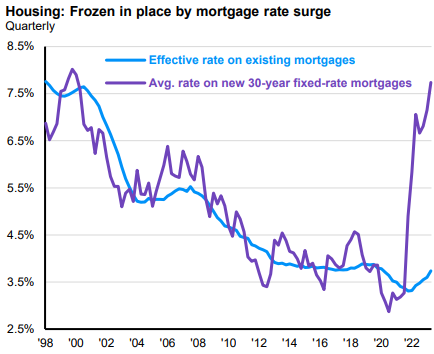Did you hear about changes in the digital assets/cryptocurrency realm a week or so ago? The SEC approved the first physical bitcoin exchange-traded funds, or ETFs. Even if you’re not into crypto it’s good to have at least a general understanding of popular investment products, so let’s talk about it.
Now I don’t want to sound overly negative or kid around too much but hearing the term “physical bitcoin” reminds me of learning about oxymorons in grammar school. I remember thinking that pretty ugly seemed funny and illustrated the point. I wonder if kids today would understand how that applies to cryptocurrencies.
Anyway, when I look in my system I now see dozens of different investment funds related primarily or entirely to bitcoin including the 11 physical ETFs just approved by the SEC. These funds are referred to as physical because they track the “spot” price of bitcoin versus tracking futures contracts. The spot price is the price of an investment for immediate delivery and is commonly associated with commodities markets such as gold and silver. I don’t want to hammer you with too much jargon but this physical/spot concept is important to understand if you’re at all interested in buying funds that hold bitcoin.
I phrased my last point purposefully. While I’m sure it’s obvious to you, dear reader, that there is no such thing as physical bitcoin (beyond something commemorative) and that was partly why it was created, investment salespeople would prefer you to think that these physical bitcoin funds offer something fundamentally different from futures-based funds. They even suggest that buying these funds is better than buying and holding bitcoin yourself. And they have a point but I’ll get to that shortly.
You may be familiar with physical gold funds from providers like Sprott. If you want gold exposure in your portfolio you can buy and sell shares of something like ticker symbol PHYS. The fund holds gold bullion and lets you redeem shares for physical gold if you’re interested in doing so and hold a lot of shares. Their website says the redemption has to be equivalent to 400 oz of gold, nearly $810,000 at today’s gold price. That’s unrealistic for most ordinary mortals but knowing that the actual commodity backs their investment is comforting for many investors who buy gold for various reasons other than pure price appreciation. Granted, much of this is personal preference but that shouldn’t be discounted too much. For them, these funds are ideal because they indirectly hold the commodity conveniently within their existing investment accounts.
https://sprott.com/media/1058/phys.pdf
And that convenience factor is more or less the common denominator of the sales pitches from the bitcoin funds.
A good example is the Grayscale Bitcoin Trust (ticker symbol BTC but formerly GBTC). Other companies are in on this now too, such as Blackrock and Fidelity. But the Grayscale fund has been around the longest (incepted in 2013, originally as a private fund based on futures contracts), has the most assets under management (nearly $29 billion) and was one of the funds recently approved by the SEC to start tracking bitcoin’s spot price. Now that it’s an ETF you can buy and sell it within your existing accounts.
Convenience is important but let’s dig a little deeper. The fund costs 1.5% per year while you hold it, about double the typical stock fund in the US but far more expensive than an S&P 500 stock index fund charging maybe 0.1% or less. I compare this to stock index funds because BTC tracks an index, the CoinDesk Bitcoin Price Index, much the same way a stock fund does. Maybe it costs more to manage a huge bitcoin portfolio but shareholders pay that management fee forever. The fund also doesn’t offer redemptions so you can’t swap shares for bitcoin. All you can do if you want out is sell your shares within your brokerage account. That’s straightforward and a reminder that, as I mentioned above, you don’t own bitcoin when you own these funds. Instead, you own shares of a fund that owns bitcoin. You get to participate in bitcoin’s price change, for better or worse, but that’s it. Now, one could say that’s like owning a stock index fund except that stocks represent real companies, many of which pay dividends, and most have long track records. Maybe bitcoin becomes a true currency but until then investing in it is pure speculation.
Maybe participating in bitcoin’s price change is enough for you but a lot of people who are interested in bitcoin also advocate for the democratization of finance, transaction privacy, and getting away from conventional markets. These bitcoin funds are the market.
So if you’re interested in owning bitcoin for any reason other than it’s price, I suggest shying away from bitcoin funds and instead buy and hold bitcoin yourself. You can do so at custodians like Coinbase and, while there’s some hassle there, the bitcoin will be yours and your transaction and holding costs will be a fraction of what you’d pay to the funds over time. Perhaps ironically, Grayscale uses Coinbase to hold its bitcoin so you’d be in good company.
Otherwise, if you’d just like some bitcoin in the overall mix of your portfolio and don’t care as much about the broader themes, these funds are perfect. Just understand what you’re buying and why. Bitcoin’s price is extremely volatile so you could dollar-cost-average into it or plan to buy on a major dip.
Also, it has been interesting to follow how bitcoin funds got to where they are today. Here are two press releases from the SEC about their recent fund approvals. The first is the general release while the second is a dissent from an SEC commissioner having to do with the likelihood for investor confusion and a misunderstanding of the risks of investing in cryptocurrencies in general.
https://www.sec.gov/news/statement/gensler-statement-spot-bitcoin-011023
https://www.sec.gov/news/statement/crenshaw-statement-spot-bitcoin-011023
Have questions? Ask us. We can help.
- Created on .




